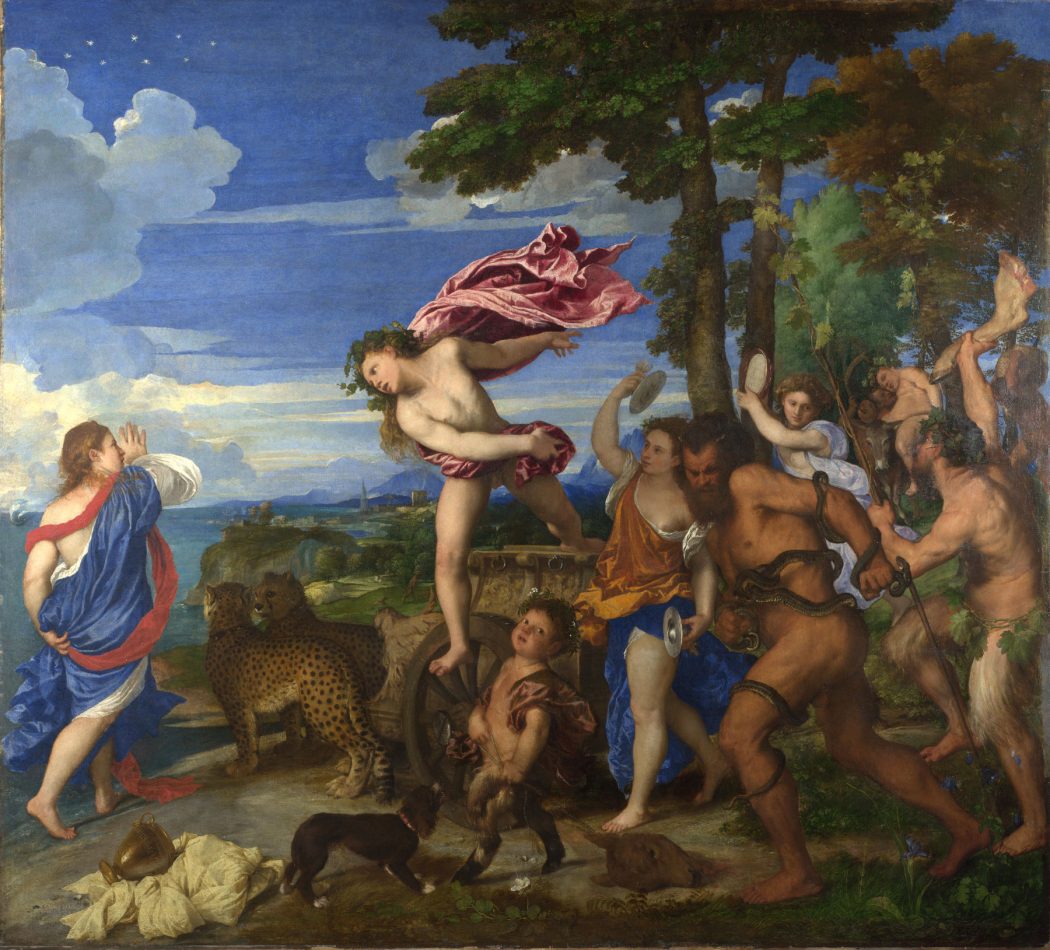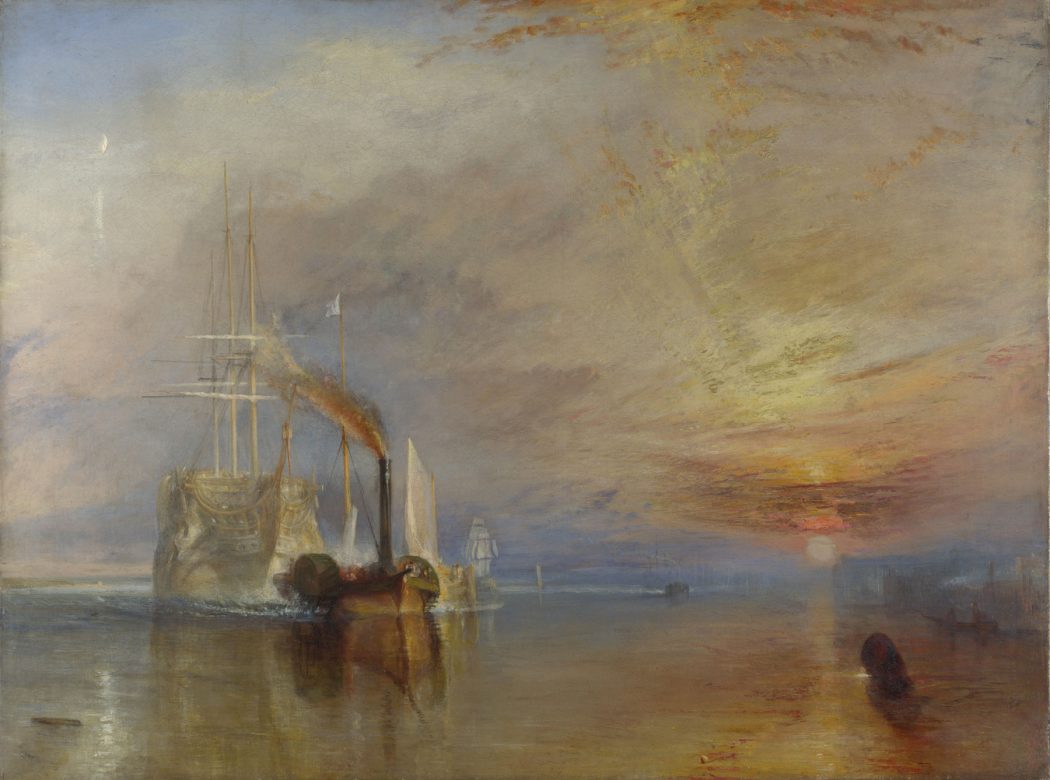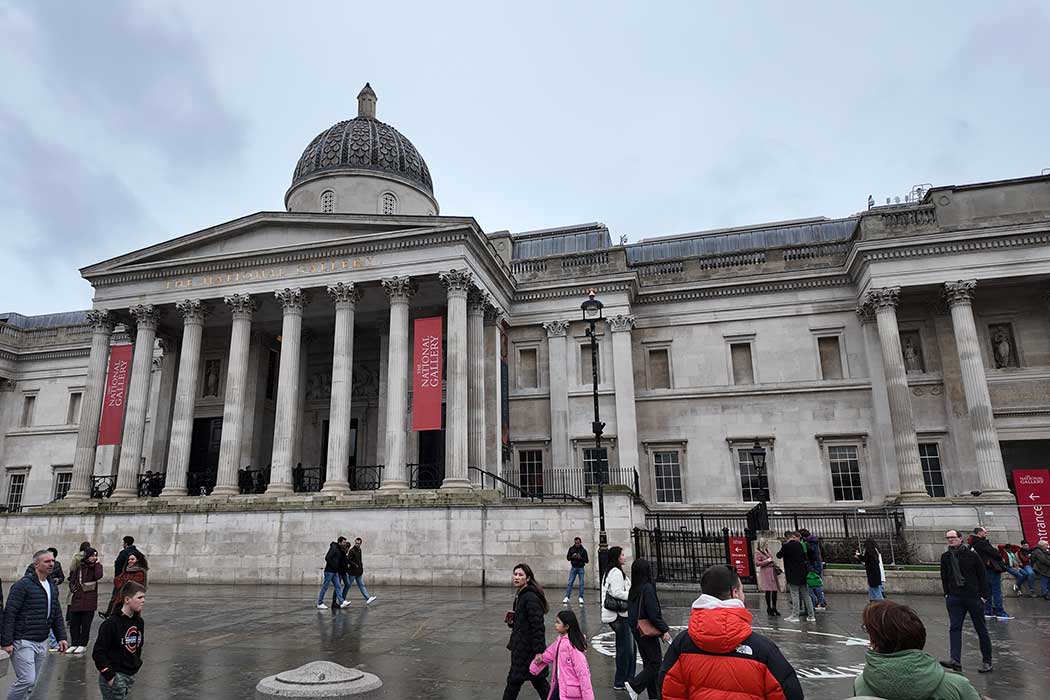From Canaletto to Constable, the National Gallery holds more than 2,300 works of art including some of the great masterpieces of European art such as Botticelli’s Venus and Mars, Monet’s Waterlilies, Renoir’s Boating on the Seine and Van Gogh’s Sunflowers.
The National Gallery is one of the most visited museums in the world and in London only the British Museum receives more visitors.
What to see at the National Gallery
The National Gallery is home to a collection of over 2,300 paintings dating from the 13th century to the early 20th century. By world standards, it is a relatively small collection but it is of a very high standard and a large portion of the gallery’s collection is on display to the public.
Paintings from the 13th to the 15th century include works by Bellini, Botticelli, Duccio, Dürer, van Eyck, Lippi, Mantegna, Memling and Uccello. Painting from this era mainly had religious themes although portraits and themes from ancient history became more popular in the 15th century. Highlights from this era include Sandro Botticelli’s Venus and Mars.
The 16th century saw the rise of the Renaissance and the gallery’s artworks from this period include works by Bronzino, Bruegel, Cranach, Holbein, Leonardo da Vinci, Michelangelo, Titian and Veronese. The museum’s highlights from the 16th century include Titian’s Bacchus and Ariadne.

The gallery’s collection from the 17th century includes works by Caravaggio, Claude, Cuyp, Van Dyck, Poussin, Rembrandt, Rubens, Velàzquez and Vermeer. Highlights from this period include Rubens Samson and Delilah, Claude’s Seaport with the Embarkation of Saint Ursula and Velàzquez’s The Toilet of Venus.
The collection spanning from the 18th to the early 20th century includes works by Canaletto, Cézanne, Constable, Degas, Van Gogh, Goya, Ingres, Monet and Turner. The gallery’s highlights from this period include Seurat’s Bathers at Asnières, van Gogh’s Sunflowers and Turner’s The Fighting Temeraire, which is possibly the most famous painting by an English artist.

Temporary exhibitions at the National Gallery
In addition to its permanent collection, the National Gallery also hosts a programme of temporary exhibitions. Some of these temporary exhibitions may incur an additional entry fee.
Current and planned exhibitions include:
Discover Degas & Miss La La
Centred on Degas’ Miss La La at the Cirque Fernando, this exhibition (until 1 September 2024) unveils newfound insights into the painting and its subject. The radical Impressionist masterpiece captures the circus artist Miss La La, revealing her extraordinary aerial skill. Degas, in 1879, skillfully depicted her perilous performance, suspended from a rope clenched between her teeth. Presenting rare drawings and unpublished photographic portraits, the exhibition delves into Miss La La’s story, shedding light on this little-known masterpiece. Free.
Hockney and Piero: A Longer Look
This exhibition (8 August–27 October 2024) features two paintings by David Hockney: one of his parents and another of his friend, Henry Geldzahler. These works are displayed alongside Piero della Francesca’s The Baptism of Christ, highlighting Hockney’s lifelong fascination with looking at art. The show invites viewers to reflect on the connections between these pieces and appreciate the enduring influence of past masters on Hockney’s work. Part of the Gallery’s Bicentenary celebrations, it encourages a deeper, more contemplative engagement with art. Free.
Van Gogh: Poets and Lovers
This exhibition (14 September 2024–19 January 2025) is a unique opportunity to experience Vincent Van Gogh’s most renowned paintings. Rarely seen paintings, sourced globally, are paired with extraordinary drawings, providing a comprehensive view of his revolutionary two-year period in the south of France. The exhibit focuses on his Arles and Saint-Rémy phase, exploring how he transformed his style with poetic colour and texture, influenced by poets, writers, and artists. Notable works include Starry Night over the Rhône (1888) and The Yellow House (1888), offering an up-close encounter with iconic pieces like Sunflowers (1888) and Van Gogh’s Chair (1889).
Discover Constable & The Hay Wain
This exhibition (17 October 2024–2 February 2025) lets you explore the origins and iconic status of John Constable’s The Hay Wain. Examining paintings such as George Morland’s Storm and William Mulready’s Farrier’s Shop, the exhibit delves into how Constable’s contemporaries depicted rural scenes. The display includes Constable’s sketches created two decades before the final piece, offering a glimpse into his artistic process. Originally deemed radical, The Hay Wain now represents a traditional English countryside image, influencing reinterpretations in response to evolving climate concerns. The narrative unfolds through works by artists admired by Constable and those responding to his masterpiece, showcasing England’s landscape in the early 19th century. Free.
Parmigianino: The Vision of Saint Jerome
The Parmigianino exhibition (5 December 2024–9 March 2025) highlights the artistic process of Parmigianino, a visionary Renaissance artist, and delves into the creation of his masterpiece, The Madonna and Child with Saints, also known as The Vision of Saint Jerome. After a decade of conservation, the artwork returns to public display alongside selected drawings, from velvety chalk studies to pen and ink sketches, offering an insight into Parmigianino’s creative process. Free.
Siena: The Rise of Painting 1300–1350
This exhibition (8 March–22 June 2025) explores the transformative period of early 14th-century Siena, where artists like Duccio, Simone Martini and the Lorenzetti brothers pioneered new painting techniques, introducing dramatic emotional expression and dynamic movement to art. The exhibition reunites scenes from Duccio’s Maestà altarpiece and panels from Simone Martini’s Orsini polyptych, alongside other artefacts like illuminated manuscripts and ivory carvings, illustrating Siena’s broad influence across Europe during this vibrant artistic era.
Visiting the National Gallery
The National Gallery is located at the northern side of Trafalgar Square. It is only a two-minute walk to Charing Cross tube station and less than five minutes to Leicester Square tube station.

Admission to the gallery is free although audio tours cost £5.
There are 60-minute guided tours of the collection’s highlights every day at 11.30am and 2.30pm.
There is a lot to see here and most visitors spend between two and three hours visiting the gallery.
We may earn a small commission if you buy your tickets after clicking this link.


There are no comments yet.